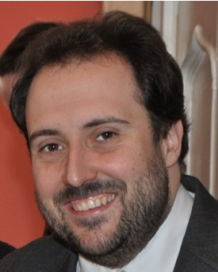讲座题目:
Inverse design for quantum nanophotonics: qubit entanglement and Bell state preparation
报告人:
Antonio I. Fernández-Domínguez Associate Professor(副教授)
报告人单位及邮箱:
Departamento de Física Teórica de la Materia Condensada and Condensed Matter Physics Center (IFIMAC), Universidad Autónoma de Madrid
时间:2024年3月18日 10:00-11:00
地点:金沙js800000九龙湖校区信息大楼1234会议室
摘要:
In this talk, I will explore the generation of entanglement between two quantum emitters through the inverse-design engineering of their photonic environment. By means of a topology-optimization approach, I will show how dielectric cloaks can be generated that operate at different inter-emitter distances and incoherent pumping strengths. I will show that the structures obtained yield steadystate concurrence values much larger than those attainable in free space, approaching the limit of maximum-entangled-mixed-states. Next, I will show how the emitter pair can be prepared, with fidelities approaching unity, into the symmetric and anti-symmetric Bell states under coherent pumping, again, through the inverse-design of the dielectric medium hosting them.
报告人介绍:
Antonio I. Fernández-Domínguez received his Ph.D. (Hons) in condensed matter physics from the Universidad Autonoma de Madrid (UAM), Spain, in 2009. Between 2009 and 2014, he held research associate and Marie Curie fellow positions at Imperial College London, UK. In 2014, he obtained a Ramón y Cajal tenure tack position at UAM, and since 2019 he is an associate professor in the same institution. His early research focused on spoof plasmon metamaterials and the phenomenon of Extraordinary Transmission. Subsequently, he employed the framework of transformation optics to investigate plasmonic phenomena in acute metallic geometries and gaps. More recently, his interests have turned into quantum nanophotonics, exploring the opportunities that this mature field can bring into quantum technology. Antonio is currently a member of the editorial board of Phys. Rev. B, APS, and handling editor of Nanophotonics, de Gruyter.


